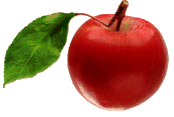
Crab apple trees
Crab apple trees
Crab apple trees can be planted as ornamentals or pollenizers, or both ornamental and pollenizer.
White-blooming crab apples are preferred by bees so if you want a pollenizer choose a white-blooming crab apple variety.
Crab apples are more desirable as pollenizers than other apple trees because the crab apples have more blossoms per square foot, each blossom has more pollen, and each pollen grain has more protein.
Some crab apples, e.g. John Downie, bloom over a very long period.
The average flowering period for crab apples from bud opening to petal fall is ten days, but very hot days or windy days with rain can cut this down to 5 or 6 days.
Here are the crab apple trees I have for sale in February 2019. Some are one-year whips and some are two-year old branched trees. I never seem to make enough crab apple trees. If you see one you like, but I am sold out, let me know before the end of February, 2019, and I can make you one which would be ready-to-go in October 2019.
-
Chestnut (M26, MM111) England 1921. Red bud opening to white blossom. Blooms mid-season, Crab apples picked in early September are 5 cm yellow with a red stripe. This is a jelly crab apple with a unique nut-like flavour. It is one of the few crab apples which can be eaten fresh off the tree.
-
Dolgo (M26, MM111) grown by N Hansen in S Dakota from seed collected in St Petersburg, Russia 1897. Used as a pollenizer for early blooming apple varieties especially Gravenstein. Flowers single, white (1.5”); fruit is oval in shape, 1", and bright carmine, ripens in late August. Excellent for jelly and pickling.
-
Hansen's Red-fleshed crab (M26) . South Dakota c 1920. Rosy red blossoms with 1.5” crabs with dark red flesh. Unusual shape. Good for jelly and colouring cider.
-
(sold out) Hyslop (MM111) Boston <1850. Three cm bright red. a source of tannin for hard cider; excellent for jelly and pickles.
-
(sold out) John Downie (M9) England 1891. Used as a pollenizer for early-mid to late-mid apples. It will not pollenize Gravenstein (blooms too early) or Northern Spy (blooms too late). 1.5” fruit is yellow with red blush and is good for juice or jelly
-
(sold out) Kerr (MM111). Manitoba 1938. Blooms early with white blossoms. Fruits are 4 cm oval and yellow-red and are often used in juices and cider.
-
(sold out) Red Glow (MM111). Ottawa, Canada. This is one of the ‘rosy-blooms’ developed by Isabella Preston in the 1920s. It blooms early-mid season with rose-coloured blossoms. The fruits are 2 cm and dark red with dark red flesh. They are not persistant. The tree is upright and spreading
-
(sold out) Red Jewel (MM111). USA 1972. The blossoms are white and the blossom time is late. The fruits are cherry-red and hang like cherries until January. The tree is disease-resistance, upright and pyramidal. Red Jewel has been named as one of the Great Plant Picks in the ‘small tree’ category (Award of the Elisabeth Carey Miller Botanical Garden, Seattle).
-
(sold out) Siberian crab (M26) China 1784. white buds, fragrant. Blooms early. Crab apples 3 cm (slightly more than an inch), oval, yellow with red stripes. Ripens in August. Good for fresh-eating and jelly. Very hardy. I note some discrepancies in descriptions of Siberian crab on the Internet. I have the one that is described here.
-
(sold out) Snowdrift (M9 and M26) USA 1965. Pink buds opening to white blossoms. Outstanding when in bloom. Excellent pollenizer for mid-season apples. Fruits are small and peach-coloured, and after a frost, the birds, especially robins, devour the fruits.
-
(sold out) Wickson (MM111) California mid 1940s. Blooms early-mid season. Crab apples 4 cm yellow and brilliant red. Unique sweetness. Used in juice and for cider. Pick Sept-October.
